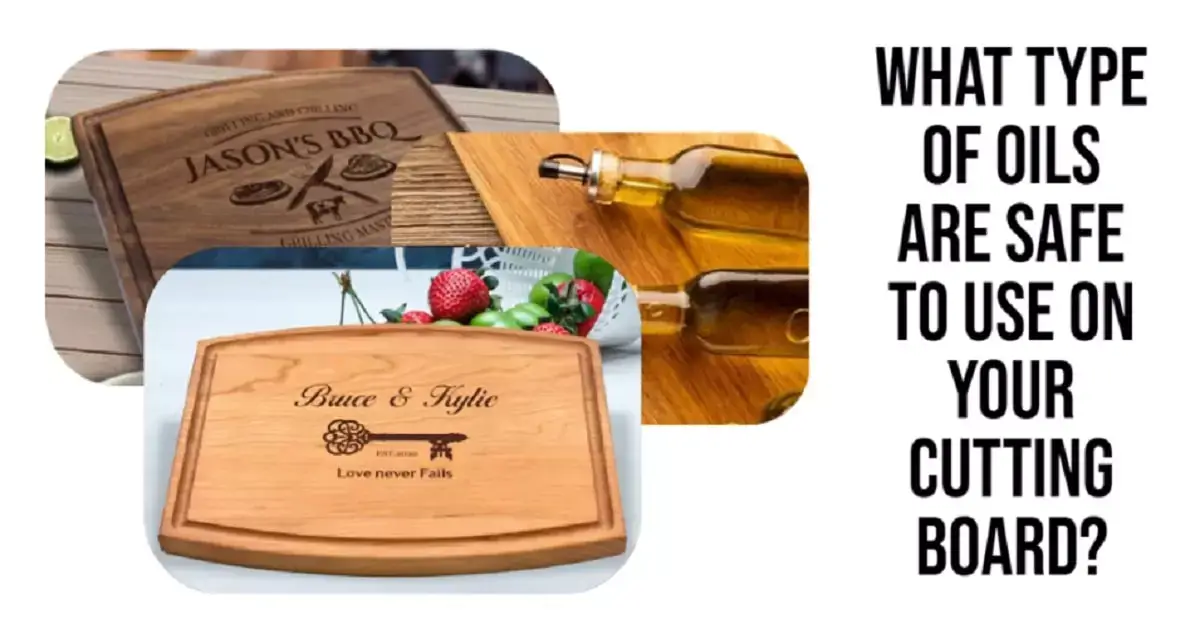Regular oiling is essential for maintaining your wood-cutting board. The oiling board keeps it moisturized, stops moisture absorption as well as guards against splits and cracks. Not all oils, meanwhile, are appropriate for use on wooden cutting boards. In this article, we’ll go through the kinds of oils that are risk-free to use and provide tips on oils safe on a cutting board.
Importance of Oiling a Wood Cutting Board
Oiling a wood-cutting board is crucial for several reasons. It helps to seal the wood and create a barrier against moisture. Wood is porous and without proper protection, it can absorb liquids, leading to warping, mold growth as well as bacterial contamination. Oiling a wood cutting board prevents these issues and extends the lifespan of the cutting board.
According to the studies, Oiling helps to maintain the aesthetic appeal of wood. It enhances the natural color and grain pattern giving the cutting board a beautiful and polished look. In addition, oiled surfaces are smoother as well as more resistant to staining.
Factors to Consider When Choosing an Oil
You should keep a few things in mind while choosing an Oils Safe on Cutting Board. meaning it should not have any poisonous components that can contaminate food. Oil should be capable of penetrating the wood and offering sufficient moisture protection. At last, oil ought to be simple to use and keep clean.
Food-Safe Oils for Wood-Cutting Boards
Several food-safe oils are commonly used for treating wood cutting boards. Let’s explore some of the most popular oil for cutting boards:
Mineral Oil
Mineral oil is a popular choice for wood cutting boards due to affordability and accessibility. It is a food-grade, odorless as well as tasteless oil that is safe to use. Mineral oil does not go rancid. It provides excellent moisture protection for wood. It is one of the best Oils Safe on Cutting Board
Beeswax and Mineral Oil Blend
For wood cutting boards, a mixture of mineral oil and beeswax works well. Beeswax helps seal the wood and gives an additional degree of protection. Mineral oil and beeswax work together to produce a lasting finish. It is a very good oil for cutting boards.
Coconut Oil
Coconut oil is a natural and readily available oil that works well for wood-cutting boards. It has antimicrobial properties that can help inhibit the growth of bacteria. But coconut oil can solidify at lower temperatures. So it may require more frequent application. It is the best cutting board oil.
Walnut Oil
Walnut oil is a food-safe oil that provides a rich, deep finish to wood cutting boards. It is easy to apply and has a pleasant nutty aroma. Walnut oil dries relatively quickly but regular reapplication is necessary to maintain the protective layer.
Food-Grade Tung Oil
Natural oil called tung oil is produced from tung tree seeds. Its durability and water resistance make it a popular choice for wood coatings. Cutting boards can be safely used with food-grade tung oil which also gives them a glossy appearance. It is one of the best oil for cutting boards.
Hemp Oil
Hemp oil is a non-toxic and eco-friendly oil that can be used to treat wood-cutting boards. It is rich in fatty acids as well as provides excellent moisture protection. Hemp oil may require more frequent application initially but forms a durable finish over time. According to the researchers, it is the best cutting board oil.
Grape Seed Oil
Cutting boards made of wood can be used after applying grape seed oil because it is flavorless and light. It is easily absorbed by wood and has built-in antibacterial qualities. If you like a lighter finish, grape seed oil is a fantastic option.
Avocado Oil
Another food-grade oil that can be used to preserve and polish wooden cutting boards is avocado oil. Because it has a high smoke point & contains antioxidants. It is good for cutting boards used for hot dishes. Also, The use of avocado oil helps keep wood from drying out and cracking.
Almond Oil
Using almond oil on wooden cutting boards is safe because it is a gentle and hypoallergenic oil. It has a mild nutty odor as well as offers effective moisture defense. Easy absorption and smooth finish are two benefits of almond oil.
Olive Oil
Cutting boards made of wood can occasionally be cleaned using olive oil, an ordinary cooking oil. But it’s crucial to remember that olive oil can eventually go rancid and might not offer the same level of long-lasting defense as other oils. Also, Use olive oil in moderation or as a temporary solution. ome consumers, this is the best cutting board oil.
Application and Maintenance of Oiling
- To oil your wood-cutting board, follow the steps given below:
- Clean the cutting board & dry it thoroughly.
- Apply a generous amount of oil to the surface of the board.
- Use a clean cloth or paper towel to spread the oil evenly making sure to cover all areas.
- Allow the oil to penetrate the wood for a few hours or overnight.
- Wipe off excess oil with a dry cloth.
- Repeat the oiling process regularly depending on the type of oil used and frequency of board usage.
Benefits of Regular Oiling
Learn about the advantages of regularly oiling your wooden cutting board.:
- It prevents warping and moisture absorption
- Oil defends against bacterial development, cracks as well as splits
- Oil Enhances wood’s inherent beauty and provides a smooth stain-resistant surface
- It increases cutting board lifespan
Conclusion: Oils Safe on Cutting Board
Proper maintenance is crucial for the longevity and hygiene of a wooden cutting board. Using a food-safe oil as well as oiling the board frequently will keep it in prime condition, guarding it against harm and assuring secure food preparation. To get the rewards of a well-kept wood-cutting board, remember the advised oiling instructions.




